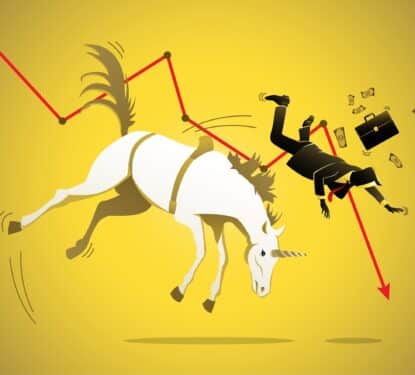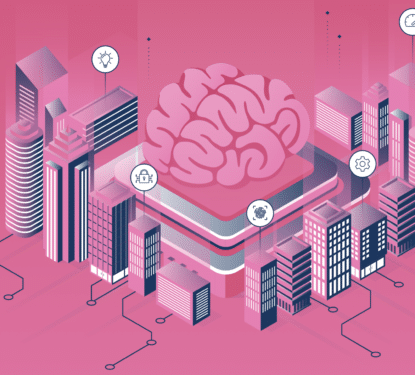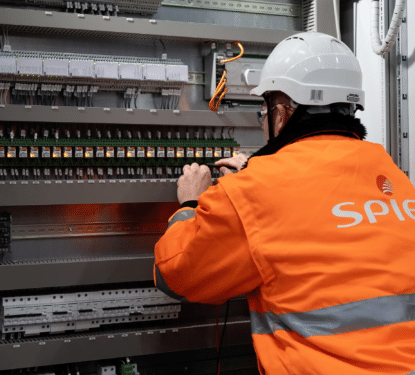While 2016 has been dubbed the year of IoT, professor Barry Dwolatzky, director of the Joburg Centre for Software Engineering http://www.jcse.org.za/, believes that despite the hype surrounding the IoT, including big data, cloud and artificial intelligence (AI), this year the Internet of Everything (IoE) will take centre stage.
The “Internet of Everything” is seen as a Cisco invention, which builds on the foundation of the "Internet of Things" by adding network intelligence that allows convergence, orchestration and visibility across previously disparate systems. However, the Internet of Everything does not describe a specific architecture, nor is it solely owned by Cisco.

Cisco theorises that as the evolution of the Internet continues, the IoE will have four pillars – people, process, data, and things – and it builds on top of the IoT pillar – Things.
The IoE further advances the power of the Internet to improve business and industry outcomes, and ultimately make people's lives better by adding to the progress of IoT. The IoE brings together these four pillars to make networked connections more relevant and valuable than ever before; turning information into actions that create new capabilities and opportunities.
Cisco predicts that between now and 2022, US$19 trillion in value is at stake for organisations willing to take advantage of the immense IoE opportunity. "If you look back a decade from today at the impact of the Internet of Everything, I predict you will see it will be five to 10 times more impactful than the whole Internet has been today", said Cisco CEO John Chambers.
In the IoE, “people” will be able to connect to the Internet in innumerable ways. Today, most people connect to the Internet through their use of devices (such as PCs, tablets, TVs, or smartphones). As the Internet evolves toward the IoE, we will be connected in more relevant and valuable ways.
For example, in the future, people will be able to swallow a pill that senses and reports the health of their digestive tract to a doctor over a secure Internet connection. In addition, sensors placed on the skin or sewn into clothing might provide information about a person’s vital signs. According to Gartner, people themselves will become nodes on the Internet, with both static information and a constantly emitting activity system.
With IoT, devices typically gather “data” and stream it over the Internet to a central source, where it is analysed and processed. As the capabilities of things connected to the Internet continue to advance, they will become more intelligent by combining data into more useful information. Rather than just reporting raw data, connected things will soon send higher-level information back to machines, computers, and people for further evaluation and decision making. This transformation from data to information in IoE is important because it will allow us to make faster, more intelligent decisions, as well as control our environment more effectively.
[contact-form-7 id="3204" title="memoori-newsletter"]
“Things” are made up of physical items like sensors, consumer devices, and enterprise assets that are connected to both the Internet and each other. In the IoE, these things will sense more data, become context-aware, and provide more experiential information to help people and machines make more relevant and valuable decisions. Examples of “things” in IoE include disposable sensors that will be placed on everyday items such as milk cartons, or permanent sensors built into Smart Buildings – such as the Building Internet of Things (BIoT).
“Process” plays an vital role in how each of these pillars — people, data, and things — work with each other to deliver value in the connected world of IoE. With the correct process, connections become relevant and add value because the right information is delivered to the right person at the right time in the appropriate way.
The IoE represents networks of networks; built upon billions, someday trillions, of connections which create unprecedented opportunities through the exponential power of networks or “network effects”. Metcalfe’s law, named after well-known technologist and 3Com founder Robert Metcalfe, states that the value of a network increases proportionately to the square of the number of users. Cisco believes the competitive dynamics of the next decade will fundamentally be shaped by different organisations’ efforts to harness network effects through the new, and deeper, connections afforded by IoE.
Whether it's smarter power grids, personalised retail experiences, improved industrial efficiency, or the ability to control the infrastructure of an entire building with a smartphone app, the IoE will be "bigger than anything that's ever been done in high tech", Chambers promised when launching Cisco’s IoE program. Looking forward, his colleague, Dave Evans, Cisco’s Chief Futurist and Chief Technology Officer, said “When the history of IoE is written, its success or failure will be determined by answering one question: How did IoE benefit humanity? In the end, nothing else matters”.



